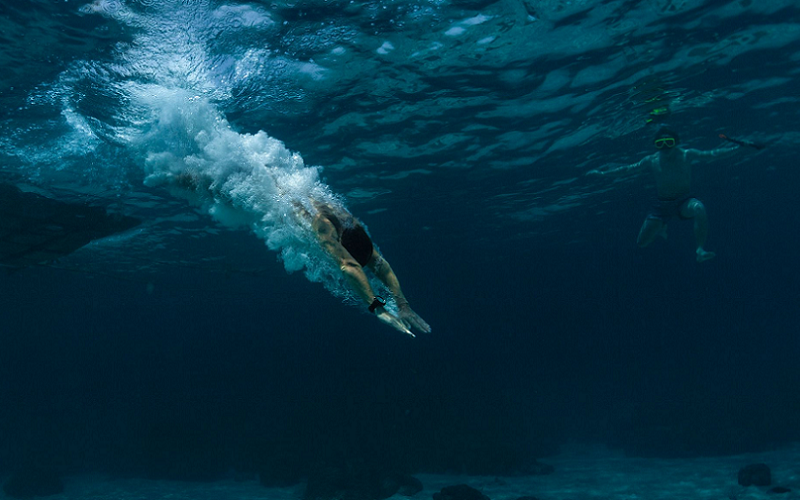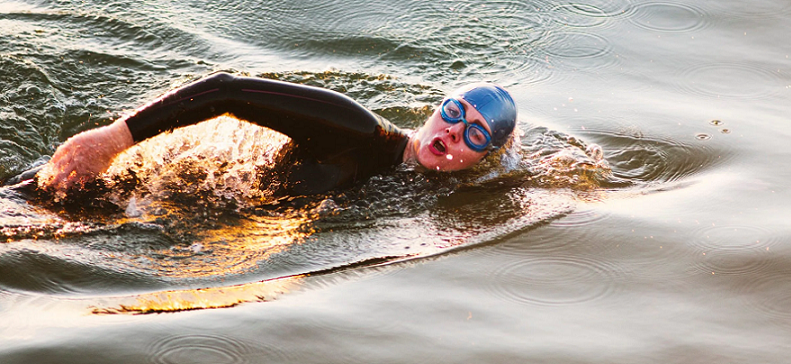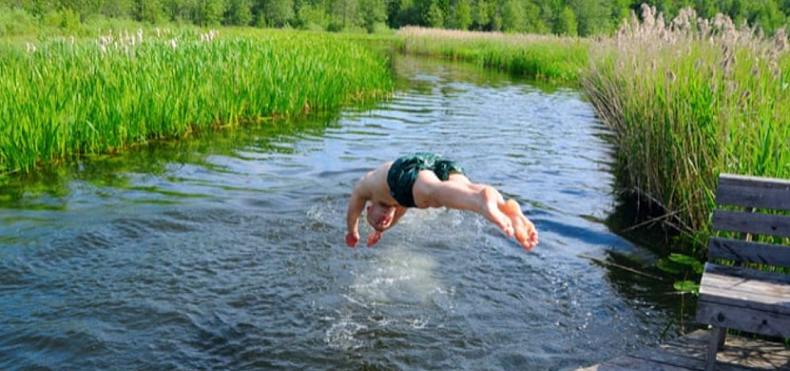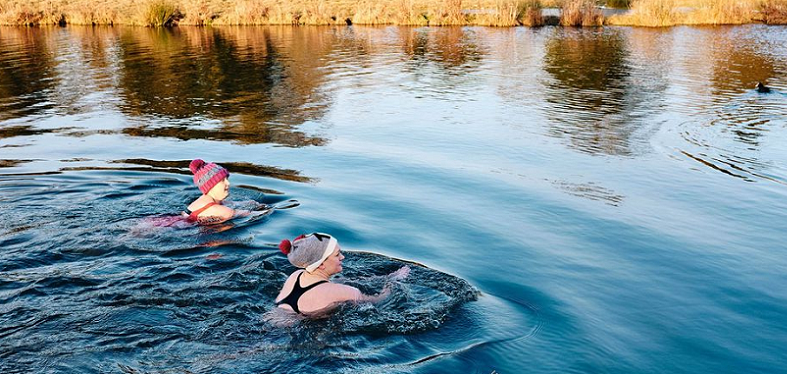
Wild swimming involves taking a dip in natural bodies of water — be it lakes, rivers, or oceans. It’s a pastime that’s been enjoyed for centuries and is experiencing a renaissance in recent years. This is not without reason. Wild swimming offers an array of benefits for both physical fitness and mental well-being, making it a truly holistic exercise form.
Contents
- Understanding Wild Swimming
- Physical Benefits of Wild Swimming
- Mental Health Benefits of Wild Swimming
- Additional Benefits of Wild Swimming
- Getting Started with Wild Swimming
- References
Understanding Wild Swimming
Let’s begin by fully immersing ourselves in the world of wild swimming. It’s a practice with a rich history, and various forms have emerged over time. Understanding this background will provide a better appreciation of the depth and breadth of wild swimming.
Definition of Wild Swimming
Wild swimming, also known as open water swimming, is the act of swimming in natural bodies of water such as lakes, rivers, oceans, or even ponds. This type of swimming stands in stark contrast to pool swimming, which typically takes place in controlled, chlorinated environments. The unpredictability of the open water—varying temperatures, changing currents, and diverse ecological systems—adds an element of adventure and challenge that pool swimming often lacks [1].
History and Evolution of Wild Swimming
The tradition of wild swimming dates back to ancient times. Our ancestors bathed and swam in natural bodies of water for hygiene, recreation, and even spiritual rituals. In ancient Rome and Greece, swimming was regarded as an essential part of a well-rounded education. In the Victorian era, sea bathing became popular for its purported health benefits, and this continued into the 20th century with the rise of lidos or open-air pools.
Despite the widespread availability of indoor and heated pools today, wild swimming is experiencing a revival. More and more people are seeking it out as a form of exercise and stress relief that also connects them with nature. Its popularity has surged in recent years as individuals seek out more holistic and nature-based forms of fitness.
Different Forms of Wild Swimming
Wild swimming takes many forms depending on the type of natural body of water available and the preference of the swimmer. Here are a few examples:
- Lake Swimming: Lakes provide still waters that are perfect for beginners or those who prefer a more relaxed swimming environment. The tranquility of a lake swim can be a soothing experience.
- River Swimming: This form of wild swimming can range from calm, slow-moving rivers to more exciting, fast-paced river swims. The current adds an extra challenge and can help build strength and endurance.
- Sea Swimming: This involves swimming in the sea or ocean, dealing with waves, tides, and saltwater. It’s often more challenging but also more invigorating. Coastal swims can also offer beautiful views and marine life encounters.
- Ice Swimming: For the truly adventurous, ice swimming or winter swimming involves swimming in water cold enough to form ice. It’s a test of endurance and mental strength and is believed to have significant health benefits.

Physical Benefits of Wild Swimming
Now that we’ve delved into the basics of wild swimming, let’s turn our attention to the numerous physical benefits this activity can offer. There’s a growing body of research that highlights how wild swimming can boost cardiovascular health, enhance strength and flexibility, aid in weight management, and bolster the immune system.
Boosting Cardiovascular Health
One of the most significant advantages of wild swimming lies in its ability to provide a robust workout for the heart and lungs [2].
Explanation of Heart and Lung Benefits
Swimming in general is known for its cardiovascular benefits. The effort required to move through water puts stress on the heart and lungs, making them work harder. This, in turn, helps to increase lung capacity and improve heart health. Wild swimming takes this one step further due to the colder temperatures and changing conditions of natural bodies of water. The body’s response to cold water includes an increased heart rate and improved circulation, further enhancing the cardiovascular workout.
Supporting Studies and Evidence
Multiple studies support the cardiovascular benefits of wild swimming. For instance, a 2018 study published in the Journal of Physiology found that swimming in cold water can improve the body’s ability to pump blood to the heart, reducing the risk of heart disease. Another study in the British Journal of Sports Medicine concluded that regular swimming, including in cold water, can reduce blood pressure and cholesterol levels, both of which are essential for heart health.
Enhancing Strength and Flexibility
Wild swimming isn’t just about cardiovascular fitness; it can also contribute to improved strength and flexibility [3].
Discussion on Muscular and Skeletal Benefits
Swimming is a full-body workout, utilizing nearly all the major muscle groups. The water resistance works your muscles harder than they would be on land, helping to build strength. Wild swimming, with its unpredictable currents and the need for greater stabilization, can further intensify this muscle work. Additionally, the range of movements involved in swimming enhances flexibility, especially in the spine, hips, and shoulder area.
Supporting Studies and Evidence
A study published in the International Journal of Aquatic Research and Education found that swimming can improve strength and flexibility, with wild swimming offering added benefits due to the added resistance from currents and waves. Furthermore, research from the Swimming Teachers’ Association (STA) suggests that the hydrostatic pressure of water can benefit bone health, which is crucial for overall strength and stability.
Aiding Weight Management
Wild swimming can also play a significant role in weight management [4].
Explanation of Calorie Burning in Cold Water
Swimming is a great way to burn calories, and the colder temperatures in wild swimming can increase this effect. When you swim in cold water, your body needs to work harder to stay warm, which burns additional calories. Plus, the effort to navigate currents and waves in natural bodies of water also increases the calorie burn.
Supporting Studies and Evidence
Research published in the Journal of Obesity suggests that exercising in cold water can increase calorie burn by up to 40%. This makes wild swimming an effective option for those aiming for weight loss or maintaining a healthy weight.
Boosting Immune System
A surprising benefit of wild swimming is its potential to boost the immune system [5].
Explanation of Cold Shock Proteins
When you expose your body to cold water, it responds by producing cold shock proteins. These proteins are believed to strengthen the immune system, making you more resistant to illnesses. Additionally, the increased circulation from cold water swimming can help to flush out toxins, further enhancing your immune health.
Supporting Studies and Evidence
A study published in the journal Free Radical Biology and Medicine found that cold water swimmers had higher levels of antioxidants, which are crucial for a strong immune system. This suggests that the body’s production of cold shock proteins during wild swimming can indeed boost the immune response.
From boosting cardiovascular health to enhancing strength, flexibility, aiding weight management, and even bolstering the immune system, wild swimming offers a holistic and impactful way to keep fit. However, it’s worth noting that these benefits are best achieved with regular practice and proper technique, and it’s always essential to ensure you’re swimming safely.

Mental Health Benefits of Wild Swimming
While the physical benefits of wild swimming are substantial, this outdoor pursuit is just as valuable for our mental health. In fact, wild swimming is increasingly being recognized for its therapeutic properties, from reducing stress and anxiety to improving mood and promoting mindfulness.
Reducing Stress and Anxiety
Wild swimming can be a powerful tool in combating stress and anxiety, offering a unique blend of physical exertion and soothing natural environments.
Explanation of Cold Water’s Impact on Stress Hormones
The act of swimming, especially in colder water, triggers the release of stress hormones like adrenaline and cortisol. While this might seem counterintuitive, regular exposure to stress in this controlled manner—often referred to as “hormesis”—can make the body more resilient to stress over time. Furthermore, the endorphins released during swimming can offset the initial stress response, leading to feelings of relaxation after the swim.
Supporting Studies and Evidence
Research supports these claims. A study from the British Medical Journal Case Reports found that cold water swimming can effectively reduce symptoms of anxiety and depression. The study suggests that the combination of cold water exposure, exercise, and the calming nature of the water environment all play a role in this.
Improving Mood and Promoting Happiness
Beyond stress relief, wild swimming can significantly contribute to overall mood enhancement and happiness.
Discussion on Endorphin Release during Wild Swimming
Swimming in cold water triggers the release of endorphins, the body’s natural mood elevators. These chemicals can lead to feelings of euphoria, often referred to as the “swimmer’s high.” Additionally, the sense of accomplishment after a challenging swim can further improve mood and foster a positive mindset.
Supporting Studies and Evidence
Research in the Journal of Sports Sciences has highlighted the mood-enhancing effects of swimming. The study found that swimmers, regardless of their level, reported increased positivity and reduced negativity after swimming. Furthermore, the unique aspects of wild swimming—the immersion in nature, the sensory experience of the cold water—can further amplify these mood-boosting effects.
Enhancing Concentration and Mindfulness
Lastly, wild swimming can contribute to improved concentration and a greater sense of mindfulness.
Explanation of the Focus Needed in Wild Swimming
Navigating unpredictable water conditions requires focus and attention, helping to enhance concentration. Additionally, the sensory experience of wild swimming—feeling the water against your skin, the rhythm of your strokes, the sounds of nature around you—encourages a state of mindfulness, allowing you to be fully present and engaged in the moment.
Supporting Studies and Evidence
A study published in the Journal of Sport and Health Science found that aquatic exercises like swimming could improve cognitive function, including attention and memory. Moreover, research in the field of ecotherapy suggests that activities conducted in nature, such as wild swimming, can encourage mindfulness and promote mental well-being.

Additional Benefits of Wild Swimming
Beyond the physical and mental health benefits that we’ve discussed, wild swimming also provides additional unique advantages. These include fostering a stronger connection with nature, offering opportunities for community and socializing, and opening up possibilities for adventure and exploration.
Connection with Nature
One of the most significant additional benefits of wild swimming is the opportunity it presents to connect deeply with nature.
Swimming in natural bodies of water allows you to interact directly with diverse ecosystems. You can observe aquatic life up close, feel the different water currents, and experience the changing seasons in a truly immersive way. This close interaction with nature can enhance your appreciation for the environment and foster a sense of stewardship for its preservation. It’s a unique benefit that indoor swimming pools simply cannot replicate.
In fact, research has shown that spending time in nature can have numerous health benefits, from reduced blood pressure to improved mood, further adding to the appeal of wild swimming.
Community and Socializing Aspects
Another additional benefit of wild swimming is the sense of community it can foster. As the popularity of wild swimming grows, so do the communities built around this activity.
Whether it’s joining a local wild swimming group, participating in organized events, or simply making friends at your regular swimming spot, wild swimming offers numerous opportunities for socializing. These interactions can provide motivation, share knowledge and experiences, and create a sense of belonging, which further contributes to overall well-being.
Adventure and Exploration Opportunities
Finally, wild swimming offers countless opportunities for adventure and exploration. Each swim can be a new adventure, whether it’s discovering a hidden beach, exploring a serene lake, or conquering a fast-flowing river.
This element of adventure can make wild swimming a thrilling activity that not only promotes fitness but also satisfies the human need for exploration and novelty. It encourages you to step out of your comfort zone, learn new skills, and discover new places, making it a truly holistic activity.
Getting Started with Wild Swimming
Having explored the numerous benefits of wild swimming, you might be eager to take the plunge. But before you do, it’s essential to prepare properly to ensure a safe and enjoyable experience.
Choose the Right Spot
Choosing the right spot for your first wild swim is crucial.
Considerations for Choosing the Location
Consider factors such as water safety, accessibility, and your comfort level with different types of water bodies. Starting in a calm lake or slow-moving river might be more suitable for beginners. Also, look for popular local spots where other swimmers regularly swim, as these locations are typically safer and more swimmer-friendly.
Resources for Finding Suitable Locations
There are several resources available to help you find the perfect spot. Online wild swimming communities often share information about local swimming spots, and there are also dedicated websites and apps that provide detailed information about various locations. Remember to always check local regulations and ensure that swimming is allowed in your chosen location.
Prepare for the Swim
Proper preparation is key to a successful and enjoyable wild swim.
What to Wear
While some wild swimmers prefer to swim in just their bathing suits, many opt for wetsuits, especially when swimming in colder water. Neoprene gloves, boots, and a swim cap can also help keep you warm. Always bring a towel and warm clothes to change into after your swim.
Safety Equipment
Consider bringing safety equipment such as a brightly colored swim cap or a tow float to make you more visible in the water. If you’re swimming in a location with strong currents or waves, a life jacket might be a good idea.
Pre-swim Health Check
Before swimming, ensure you are in good health. Don’t swim if you’re feeling unwell or if you’re excessively tired. Remember, wild swimming can be physically demanding, so it’s important to listen to your body.
Practice Safe Swimming
Once you’re in the water, it’s crucial to practice safe swimming.
Starting Slow
Begin with short swims close to the shore and gradually increase your distance as your confidence and stamina grow. Don’t push yourself too hard on your first few swims.
Awareness of Conditions
Be aware of the conditions around you. Pay attention to the water temperature, current, and any potential hazards. Always be mindful of potential changes in weather.
References
[1] Wild swimming: The exercise that’s good for your physical and mental health
[2] Open Water Swimming: Everything You Need to Know
[3] Open-water swimming: a beginner’s guide
[4] Wild swimming benefits for health, fitness and wellbeing
[5] Freshwater Wild Swimming, Health and Well-Being: Understanding the Importance of Place and Risk





